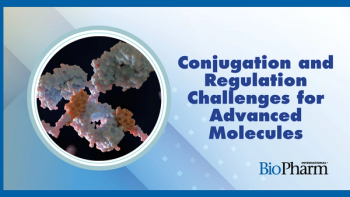
- BioPharm International, August 2022 Issue
- Volume 35
- Issue 8
- Pages: 6
Navigating the Future
Promising applications for targeted delivery may be cresting the horizon.
In August it feels odd to be speculating what people will find important on the final days of December 2023, but that’s the job when creating next year’s editorial calendar. Sensible navigation typically means maintaining a series of fixed compass headings. But to optimize any journey one must make calculations regarding prevailing weather patterns, current good health, and the indispensability of certain predestined ports of call. As part of a large team, this engenders boatloads of discussion. Ultimately, however, we end up in the same spot and in the same boat.
Writing about the calendar allows me to illustrate how inputs arrive from diverse sources. This includes feedback from articles, discussion at conferences, and mining our own podcasts, video interviews, and symposia presentations. An upcoming September Drug Solutions podcast, for our sis- ter publication Pharmaceutical Technology, is a conversation with Dr. Uwe Schoenbeck, chief scientific officer, External Research and Development Innovation (ERDI); and senior vice president, Worldwide Research and Development (WRD), Pfizer. Quite a job title and quite the challenging job. He is also navigating the industries future, albeit with a broader mission than our editorial team. In this dialogue, Uwe covers what’s important to Pfizer when in comes to partnering, by emphasizing areas such as repeat expansion disorders, senescence, DNA damage response and nucleic acid sensing, deubiquitinase pathways, and neuroinflammation. Pfizer feels these hold special promise for new innovative therapies.
And I was struck by a Parthian shot. “An area everyone, including us, is looking into for further improvements,” he fired at me, “is targeted delivery. True not just for RNA but true for small molecules, large molecules, and also oligo-based therapies … there’s a lot of activity for lipid nanoparticles for local delivery, there’s a lot of activity in the capsid space, so any kind of tropism that you can introduce that would really be selective, and could be dialed in and out as desired, would be a very promising platform that we would be very interested in, obviously.”
I can look into the future and it is manifestly obvious targeted delivery will be on next year’s calendar.
About the author
Chris Spivey is the editorial director of BioPharm International.
Article details
BioPharm International
Vol. 35, No. 8
August 2022
Pages: 6
Citation
When referring to this article, please cite it as C. Spivey, “Navigating the Future,” BioPharm International 35 (8) 2022.
Articles in this issue
over 3 years ago
Driving Manufacturing Improvements Through Viral Vector Advancesover 3 years ago
Developing Automation Downstreamover 3 years ago
Outlining Successful Steps for Scale-Up and BLA Filingsover 3 years ago
Continuous Processing for Viral Vectorsover 3 years ago
Accelerating Time-to-Insight Across the BioPharma Lifecycleover 3 years ago
Automating Packaging of Bio/Pharmaceuticalsover 3 years ago
FDA Joins Effort to Curb Drug Patent Abusesover 3 years ago
Regulatory Applications for BiologicsNewsletter
Stay at the forefront of biopharmaceutical innovation—subscribe to BioPharm International for expert insights on drug development, manufacturing, compliance, and more.




